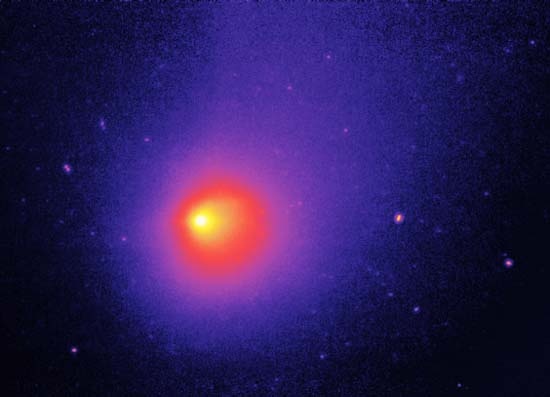Schwassmann-Wachmann 1, Comet
astronomy
 short-period comet discovered photographically by the German astronomers Friedrich Carl Arnold Schwassmann and Arthur Arno Wachmann in 1927. It has the most nearly circular orbit of any comet known (eccentricity 0.131) and remains always between the orbits of Jupiter and Saturn, having an orbital period of 16.4 years. It is also remarkable for outbursts in its brightness, which sometimes increases by several magnitudes in a matter of hours. These outbursts are determined to be the result of the transient development of a coma (faint atmosphere) of gas and dust, but, because this event occurs at random along the comet's orbit, it cannot be explained by variations in solar heating of the comet's nucleus. Rather, it is thought to be caused by heat-evolving chemical reactions occurring inside the nucleus or from the buildup and occasional release of internal gas as solar radiation gradually evaporates volatile materials below the crust of the nucleus.
short-period comet discovered photographically by the German astronomers Friedrich Carl Arnold Schwassmann and Arthur Arno Wachmann in 1927. It has the most nearly circular orbit of any comet known (eccentricity 0.131) and remains always between the orbits of Jupiter and Saturn, having an orbital period of 16.4 years. It is also remarkable for outbursts in its brightness, which sometimes increases by several magnitudes in a matter of hours. These outbursts are determined to be the result of the transient development of a coma (faint atmosphere) of gas and dust, but, because this event occurs at random along the comet's orbit, it cannot be explained by variations in solar heating of the comet's nucleus. Rather, it is thought to be caused by heat-evolving chemical reactions occurring inside the nucleus or from the buildup and occasional release of internal gas as solar radiation gradually evaporates volatile materials below the crust of the nucleus.